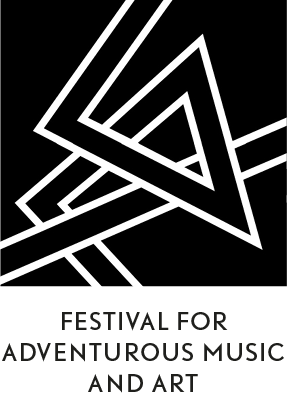Festival Editions
Research Networking Day: Fear
Kunstquartier Studio 1, Mariannenplatz 2, 10997 Berlin → MapTickets: Free Entrance
29
SunThe Research Networking Day provides a platform for students and researchers from different European graduate and postgraduate programmes traversing the fields of audio, arts, media, design and related theoretical disciplines to exchange ideas and experiences. A yearly initiative co-organised with Humboldt University’s Department of Musicology, the RND sought submissions from students, junior researchers and persons pursuing higher levels of research and studies to present projects and findings connected to the CTM 2017 Fear Anger Love Theme.
Module III Introduction
The third Research Networking Day 2017 module is hosted by Henning Wellmann, who studied at the University of Bremen, Germany and the University of Tampere, Finland. From 2010 to 2014 he was a pre‐doctoral fellow at the Max‐Planck‐Institute for Human Development in Berlin, as a member of the research group “Felt Communities? Emotions in European Music Performances.” He is currently working on his dissertation project, titled “Punk Culture: Orders of Radical Difference.”
Music, Fear and Early Forms of Experiencing. The Experience of Music in the Perspective of Psychoanalysis
Christoph Sulyok (Karl Franzens University Graz, Austria) & Mike Kostner (artist, Vienna)
Fear is an essential emotion in the evolution of a human being. The psychoanalyst Michael Balint distincts two basic forms of fear, which are determined in the prenatal phase and lead to two types of personalities: the philobat and the oknophil. Both emphases are connected with the leaving of an paradisiac, “in uterus” state and the way of behaving around this process. The philobat seeks for vastness and freedom, the oknophil for hold and contact in human relationships and objects. The respectively opposed state generates fear, but also reveals thrills (“Angstlust”) in approximating to these conditions. For artists and audiences, thrills can be a fundamental motivation for a transgressional process, aesthetically and psychologically. Music as an artform interacts with the listener’s unconsciousness, it expresses feelings and helps us cope with them. Music however can also bring us to an inner place of refuge, becoming a defense against relations, increasing or reducing fear. In using Balint’s analytical model we try to define types of fear in the context of music. We examine the effect of fear (“Angstlust”) in the form and style of music. We also explore the interrelation between Baltin’s model and the gradual deep listening experience of music.
Christoph Sulyok finished a Masters in Psychology before pursuing Psychodynamic Psychotherapy at the Karl Franzens University in Graz, Austria. He works and studies in the fields of forensics, psychiatry and sexuality. Mike Kostner received his Masters in Media Arts at the University of Applied Arts in Vienna, where he currently continues to work on diverse art projects.
Sounds of Fear in Vinyl-terror & -horror’s Performances
Karin Weissenbrunner (City University London, UK)
Vinyl-terror & -horror work with turntables and fear. Although we are familiar with fear from watching horror movies, it is not something often encountered in musical performances. The Danish duo Camilla Sørensen and Greta Christensen aka Vinyl-terror & -horror use samples from movie soundtracks to create cinematic soundscapes in their concerts. They build up suspense and an atmosphere of the uncanny with ‘negative images’ and excerpts of ‘empathetic music’ (Chion, 1994). Drawing on film soundtrack theories, my study reveals that in these fearful concert situations, listening is shaped by an intense affective state. The artists’ assemblage of vinyl records and turntables from a visual point of view results in crude and rough-looking sculptures and curiosities. The materiality of these broken objects produces manipulated sounds and noises, while creating a dialogue with the media reality (Großmann, 1997) of the samples. In Vinyl-terror & -horror’s performances, we find prevalent cross-references from anecdotal to abstract sounds, from imaginative to real, from immaterial to material. Taking a multi-disciplinary approach, my presentation demonstrates how concepts of fear are entwined with the performances and the materiality of the turntable sculptures.
Karin Weissenbrunner is a PhD candidate in Musicology at City University London. She holds a Master’s from the Technical University of Berlin, where she studied systematic musicology, audio communication and technical acoustics. She was a student assistant in research groups at IRCAM in Paris and at Max Planck Institute for the History of Science in Berlin. Her study develops an analytical methodology that acknowledges the interdependencies between instrument design, materiality, mediality and improvisation in live performances with turntables. Her interests lie in sound art, experimental music, DIY electronics, individual instruments and audiovisuals. She also organizes workshops and concerts in these fields.

